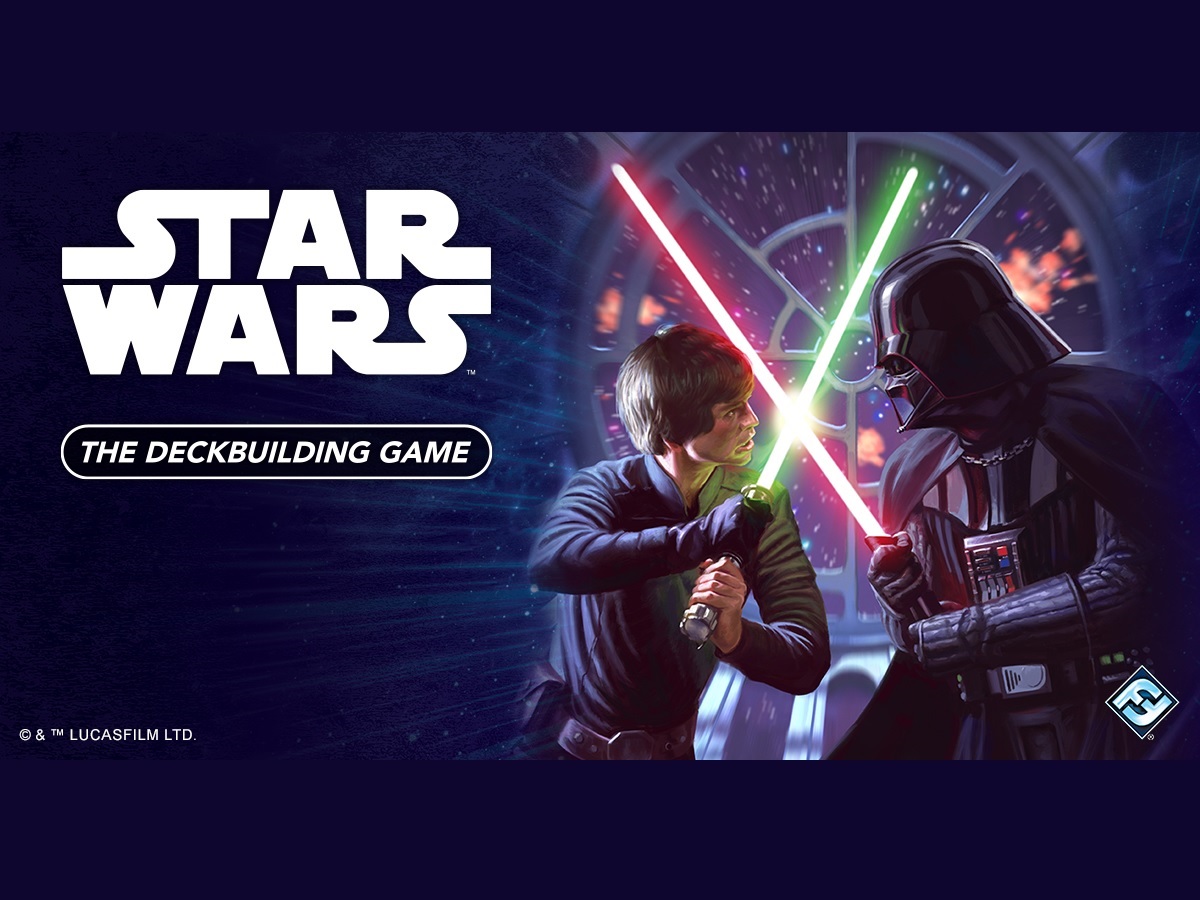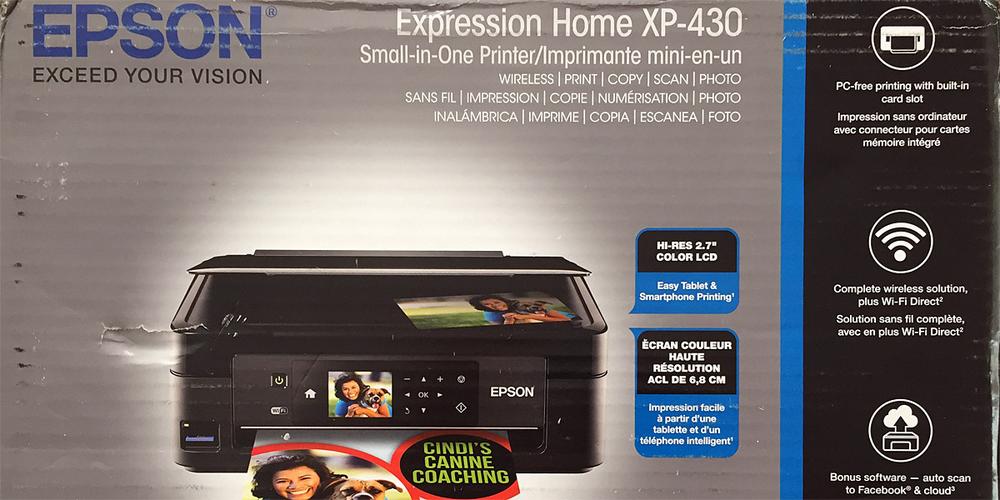Ever since I first saw the small Tantive IV blockade runner being pursued and captured by the enormous triangular-shaped star destroyer in the space above the planet Tatooine over four decades ago, I have enjoyed spending time in the Star Wars universe. Whether watching movies and television shows, reading novels and comic books, or playing video and tabletop games based on these stories, I have enjoyed the fight between the light and dark sides of the Force. Now with Star Wars: The Deckbuilding Game I can once again take part in this epic struggle.
What Is Star Wars: The Deckbuilding Game?
Star Wars: The Deckbuilding Game is a head-to-head competitive card game for 2 players, ages 14 and up, and takes about 30 minutes to play. Players take on the role of the Empire or the rebellion and must build up their starter deck by using resources to recruit famous and infamous characters and spaceships to their side in order to defeat their opponent. It’s currently available from your FLGS as well as from Amazon with a suggested retail price of $37.99 for a copy of the game. Star Wars: The Deckbuilding Game was designed by Caleb Grace and published by Fantasy Flight Games, with graphic design by Christopher Hosch and Laurence Smith.
Star Wars: The Deckbuilding Game Components
Here is what you get inside the box:
- 10 Empire starter cards
- 10 Rebel starter cards
- 90 Galaxy cards
- 10 Outer Rim Pilot cards
- 20 Base cards (10 Rebel, 10 Empire)
- 2 Reference cards
- 1 Balance of the Force track
- 50 Damage Counters
- 20 Resource counters
- 1 Force marker
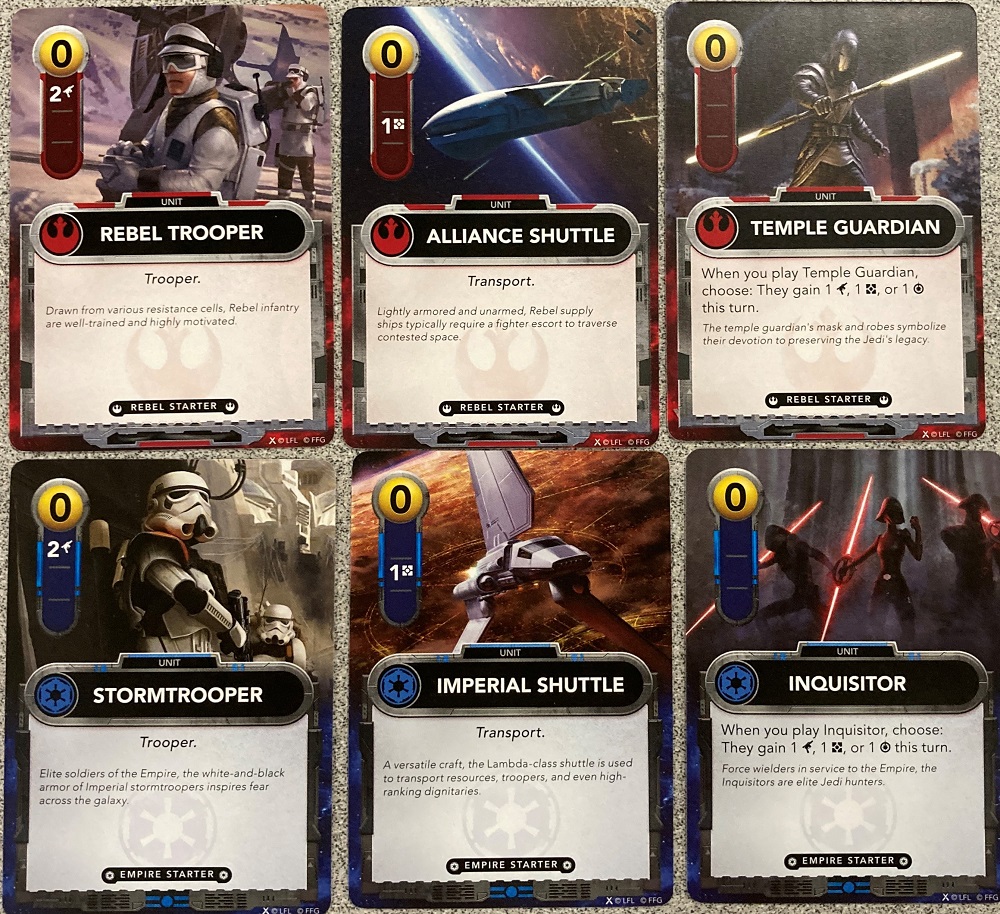
Each player begins with a starter deck of 10 cards. These include 7 shuttle cards that provide resources, two trooper cards that have attack values, and a force user card that has a force value. Players will use these cards to purchase new cards from the galaxy row as well as attack enemies or move the Force marker.

The galaxy cards make up the majority of the cards used during play. They are divided into three factions: Empire, Rebel, and Neutral. There are two types of galaxy cards: units and capital ships. Each has a cost in the upper left corner that represents the number of resources that must be spent to purchase that card. They can also have one or more of the following values: attack, resources, and force. Some also have abilities that can be used. Unit cards also have a number and text at the bottom that is printed upside down. This is the card’s target value and the reward earned if it is defeated by either Bounty Hunting or Sabotage.

Capital ships are also found in the galaxy row. However, they act a bit differently than unit cards. They do not get discarded at the end of your turn but instead stay in the play area and are used to defend your base. Some also have abilities as well.
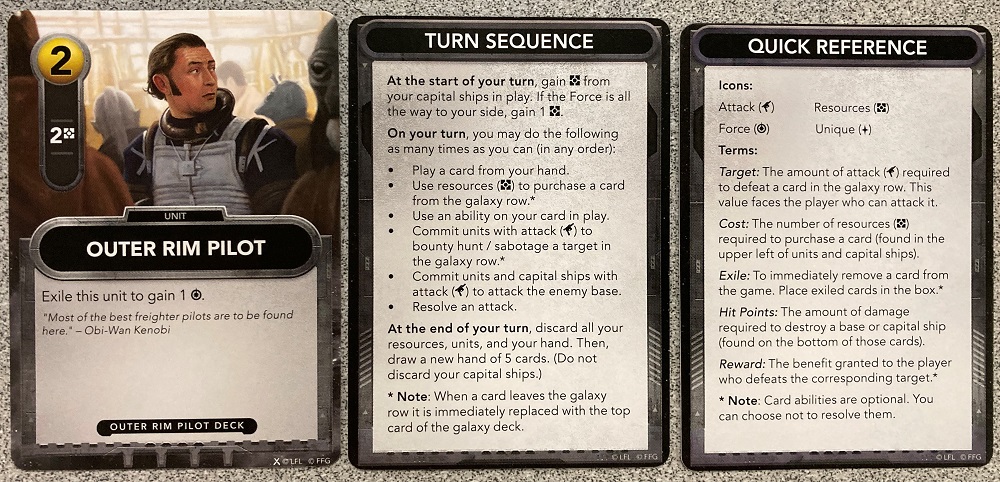
Outer Rim Pilot cards are always available for purchase. They provide two resources when they are played. However, you can exile it (remove it from the game) in order to move the Force marker one space in your direction. Each player also gets a reference card which contains most of the info from the rules.

Each faction has 10 base cards. One of those 10 is the starting base which is the same for each game. The objective of the game is to attack and destroy the other players bases.
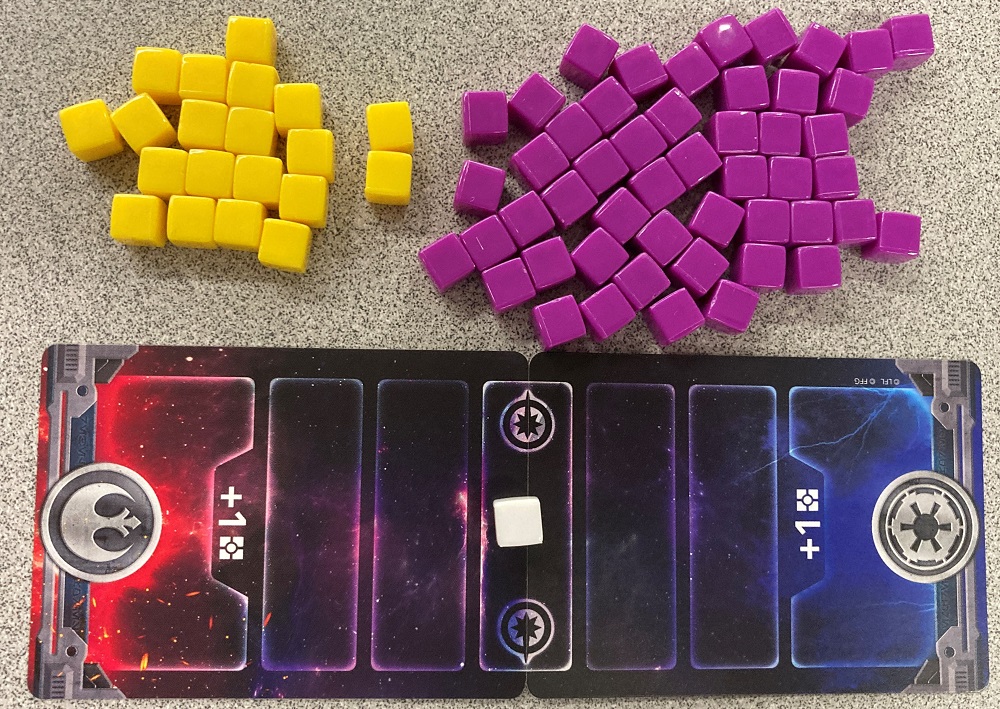
The Balance of the Force track is used to illustrate which way the Force is favoring. Some cards have abilities that depend on this track. Plus, if the white Force marker is all the way on our side, you get a free resource at the start of your turn. The purple markers are for damage and the yellow markers are used to keep track of resources.
How to Play Star Wars: The Deckbuilding Game
You can download a copy of the rulebook here.
The Goal
The goal of the game is to be the first to destroy three of your opponents bases.
Setup
Players start off by choosing to play as either the Rebels or the Empire. They then take the base cards for their faction and find their starting base. For the Rebels this is Dantooine and for the Empire is it Lothal. They then select four other bases. Place these four bases face down in a pile and then placed the starting base face up on top of the pile. Each player then separates their 10 starter cards for their faction from the other cards. Shuffle these 10 starter cards and place them face down to form their player decks.
Next shuffle the 90 galaxy cards together to form the galaxy deck. Deal the top six cards in a line to create the galaxy row. Turn Empire cards so they are facing the Imperial player and Rebel cards so they are facing the rebel player. Turn neutral cards sideways so both players can easily read them. Place the rest of the galaxy deck face down on one end of the row. Then place the 10 Outer Rim Pilot cards face up at the other end of the galaxy row. Form piles for the damage and resource counters so that both players can easily access them. Next, unfold the Balance of the Force track and position it next to the Outer Rim Pilot cards. Place the white Force marker all the way to the Rebel side of the track. Finally, each player draws five cards from their player deck to form their hand. You are now ready to begin the game.
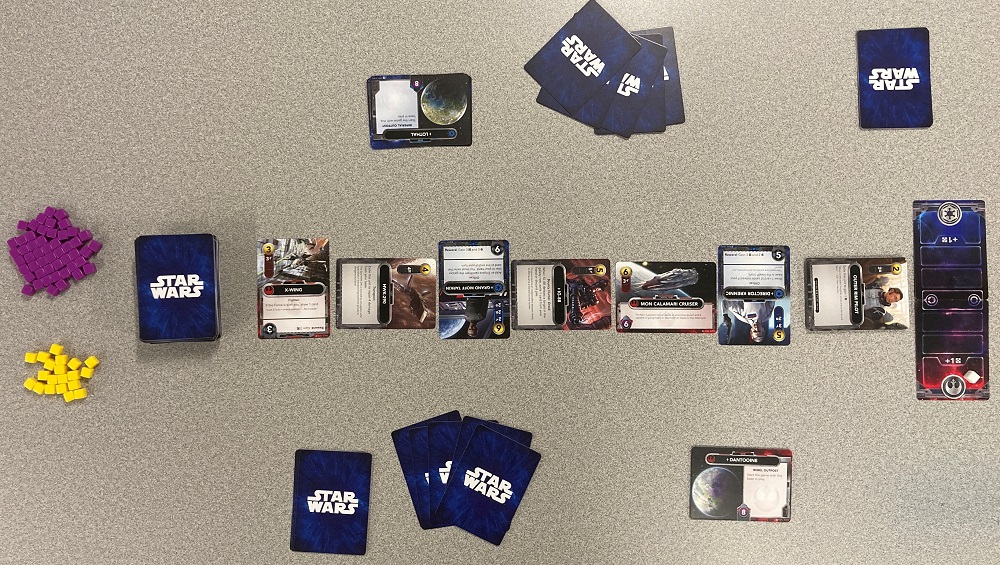
Gameplay
Star Wars: The Deckbuilding Game is played over a series of turns. The Empire takes the first turn followed by the Rebels. They continue to alternate turns until one player succeeds in destroying three of their opponent’s bases. At the start of a turn, if a player does not have a base because theirs was destroyed by the other player during their last turn, the current player can look at the their remaining bases and choose one to reveal as the new base. If the Force marker is all the way on this player’s side, they may take one resource counter from the supply and place it in their play area. The player may also receive resources for any capital ships they have in play, though they will have any at the start of the game.
During their turn, a player can perform as many actions as they choose using the cards in their hand. When they play a card from their hand, they place the card face up in front of them. They immediately collect resources equal to the resource value of the card. If the card has a force value, they move the Force marker along the Balance of the Force track towards their side of the track. These cards remain in play until the end of your turn. Capital ships remain in play until they have taken damage equal to or greater than their hit points.
As players collect resources into their resource pool, they may use these resources to purchase cards. It is important to note that any unused resources are returned to the supply at the end of the turn, so use them or lose them. The Rebel player can purchase Rebel and neutral cards from the galaxy row while the Imperial player can purchase Empire and neutral cards. Both can purchase Outer Rim Pilot cards. To purchase a card, pay a number of resources from our resource pool to the supply equal to the cost of the card purchased. The purchased card is taken from the galaxy row and placed face up in that player’s discard pile. Then replace that card by drawing a galaxy card from the deck and adding it to the row so there is always six cards in the row.
Some cards have an ability. Once a card has already been played, you can use the ability only once during your turn. When resolving an ability, perform as much of the effect as you can and ignore the rest. Then tilt the card slightly to remind you that you have used that card’s ability.
If a card has an attack value, it can be committed to attack your opponent’s base. You can also attack enemy cards in the galaxy row. This is referred to as Bounty Hunting for the Empire and sabotage for the Rebels. To commit to any attack, group cards together that you want to use to attack and place them near the card in the galaxy row they will attack and be sure to keep cards whose ability you used tilted to remind you that they have already use their ability. You can commit as many cards to attacks as you want. However, nothing occurs until you decide to resolve the attack.
Once you have committed the cards you want to the attack, you may then resolve the attack. When attacking a base, add up the total attack value of all cards committed to that attack and then collect that number of damage counters. Before you can inflict damage on a base, you must first defeat any capital ships your opponent has in play. Place damage counters as you wish on the enemy capital ships. Once a capital ship has damage counters on it equal to its hit points, it is defeated and placed in the owner’s discard pile. Any additional damage counters remaining are then applied to the base. If the damage is equal to or greater than the base’s hit points, it is destroyed and the base card is placed at the end of the Balance of the Force track on the winning player’s side to form their victory deck.
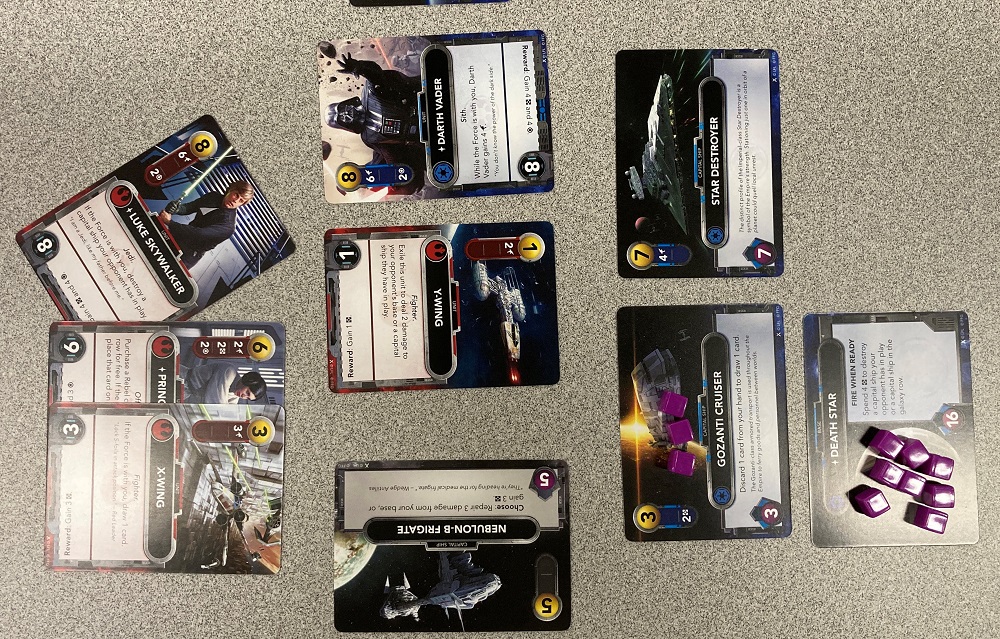
When resolving a Bounty Hunting or Sabotage attack against a unit card in the galaxy row (not a capital ship), total the number of attack points and compare it to the target value on the bottom of the targeted card. If the attack points is equal to or greater than the target value, the card is discarded from the galaxy row and placed in the galaxy discard pile. The attacking player may collect the reward listed on the defeated card. Bounty Hunting or Sabotage is a great way to prevent the enemy from getting certain cards as well as providing resources or other rewards. Capital ships cannot be used for these types of attacks and any extra damage is lost and not applied to another target.

Once a player has played all of the cards they desire to play, they then discard all of their unit cards in play and return their base and capital ships to their proper orientation in the play area. Next discard any cards remaining in their hand and any resource markers from their pool. Finally, the player draws five new cards into their hand. If the player’s deck ever runs out of cards and another card needs to be drawn, shuffle the cards in the discard pile to form a new deck.
Game End
The game ends immediately after a player’s third base is destroyed. No other cards or abilities may be used after that. The player who destroyed the base is the winner for the game.
Why You Should Play Star Wars: The Deckbuilding Game
Deck-building is one of my favorite mechanics. I like games that use cards, but I don’t really like to spend a lot of time crafting the perfect deck. Instead, I want to build my deck as I go. Since I am also a big Star Wars fan, when I first learned about Star Wars: The Deckbuilding Game, I was excited to give it a play. I have always been impressed with Fantasy Flight Games and especially their Star Wars products. This game is no exception. The box comes with a nice tray to keep your cards and other components organized. There are spaces for the two starter decks and bases, the Outer Rim Pilot cards, the galaxy cards, and the markers. This lets you easily get this game out of the box and ready to play in little time. The art on the cards is great and similar to other games by this company. Another positive is that there are no cardboard counters or tokens. Instead, all of the markers are colored plastic cubes while not only look nice, but are easier to pick up and move around the play area.
I like that the rules are fairly simple. You get a hand of five cards each turn and can play them all. At the end of the turn, you discard all of them and draw five new cards. I also like that you can use all of the values on a card. You don’t have to decide whether to use it for resources or for an attack. You can do both as well as use its ability. That makes your hand of five cards much more useful, and the more powerful cards you get, the more you can do. While the main rules are simple, the different abilities on the cards and how they interact adds more complexity and strategy to the game. There is no need to have a large instruction manual to refer back to since all of the text you need is right on the cards. The way the cards are divided into three factions also follows the storyline of a galaxy far, far, away. Each side has their own units and ships, but they can also purchase the help of neutrals which include smugglers, bounty hunters, and freelance pilots with their own ships. The way the galaxy row is used by both players, but they can only purchase their own side’s cards or neutral cards provides for some interesting play. The ability to attack enemy cards in the row and deny them to your opponent, while also gaining a reward through Bounty Hunting or Sabotage adds an additional layer to the game. Do you spend all of your attack value of your cards going after the enemy base or do you instead go after cards the other player may purchase on their own turn? Plus, if you engage in Bounty Hunting or Sabotage before you spend your resources, as you discard the enemy card you defeated, you may add a new card to the row that will help you. These are all things a player can consider during their turn.

While Star Wars: The Deckbuilding Game offers quality components and some interesting game mechanics, I also really enjoyed playing it. Depending on which side I chose to play, I felt like I was either trying to put down a rebellion or fighting against an evil empire. You can quickly teach other players the rules in a matter of minutes and then get playing. I like to play a practice or tutorial game where players can learn as they play, feeling free to ask questions about specifics of the rules and card abilities as they come up. Usually this only requires a few turns and then we start over and play for real. Once you have some experience with the cards and rules, a game runs only about 30 minutes which makes it a great game for playing during a lunch break or after dinner. The short play time also allows you to play several games at one sitting. If you want to play with four players instead of two, there are advanced rules for a two vs. two game that requires two copies of the game.
Star Wars: The Deckbuilding Game has a great balance between simplicity and depth. While I enjoy more involved Star Wars game that can take several hours to play, at times I just want a quick pickup game that I can take off the shelf, setup, play, and put away in under an hour that still has a great theme around which the gameplay is designed and for which the theme is not just an overlay. This is a game that beginners can easily learn yet can also be enjoyed by veteran gamers. I recommend Star Wars: The Deckbuilding Game as a great game for fans of Star Wars who enjoy card games.
For more information or to make a pledge, visit the Star Wars: The Deckbuilding Game webpage!
Click here to see all our tabletop game reviews.
![]() To subscribe to GeekDad’s tabletop gaming coverage, please copy this link and add it to your RSS reader.
To subscribe to GeekDad’s tabletop gaming coverage, please copy this link and add it to your RSS reader.
Disclosure: GeekDad received a copy of this game for review purposes.
